From the Fifty Grande website: “The Most Iconic Hotels in Every US State”
Click here for the entire list, along with a little blurb about each one.
From the Fifty Grande website: “The Most Iconic Hotels in Every US State”
Click here for the entire list, along with a little blurb about each one.
Zacatecas, Mexico
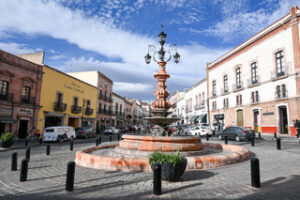
This article on Zacatecas, a relatively remote Mexican city, has piqued my interest in visiting it one day. In addition to the usual for old Spanish Colonial cities – majestic buildings, handsome squares, and winsome parks – Zacatecas is said to have an impressive number of museums and galleries of art, 19th century, Modern, and contemporary. Read about it here.
Savannah, Georgia
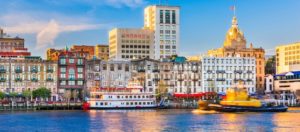
I flew from Baltimore last week to Savannah, where I spent a long weekend with K before meeting the kids and grandkids at a resort called the Palmetto Bluffs Montage in South Carolina. This is a family week for me, which means I am working no more than four hours a day. Okay, yesterday I worked eight hours, but someone has to pay the bills. And anyway, who’s counting?
This was the third time I’ve been to Savannah. Each time, I’ve liked it better than the last. It sits on the Georgian coast, on the Savannah river, across from South Carolina. It is a beautiful city in the southern style, with dozens of small, well-kept parks, cobblestoned streets, stately Civil War monuments of OWM (Old White Men) and newer statues of YBW (Young Black Women). It has a fine collection of 19th century churches and public beaches, including the Gothic-Revival Cathedral of St. John the Baptist, a river walk reminiscent of Bourbon Street, museums, a theater district, good restaurants, great food, etc.
And tying it all together, are thousands of 100- and 200-year-old live oaks, with their heavy horizontal branches, draped with Spanish moss, arching over the streets and parks.
A Few Fun Facts About Savannah
* The “Life is like a box of chocolates” scene in Forrest Gump was filmed in Savannah’s Chippewa Square.
* Instead of burning it to the ground, as he had done a month earlier with Atlanta, General Sherman gave Savannah to President Lincoln on Dec. 22, 1864 as a Christmas gift.
* Savannah’s Spanish moss is not actually a moss. It’s a close cousin to the pineapple.
* Savannah’s First African Baptist Church, a stop on the Underground Railroad, was the first Black church in the country.
* When Savannah was founded in the 1700s, the founder, James Edward Oglethorpe, made many things illegal, including Catholicism, alcohol, and lawyers.
Place de la Concorde, Paris, France
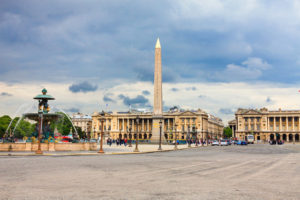
You can’t spend any time in Paris without passing through Place de la Concorde at least a half-dozen times. It’s located between so much of what you want to go back and see.
Covering almost 19 acres, this 18th-century tribute to Louis XV remains the largest square in Paris. Looming even larger than the dimensions, however, is the local lore. During the French Revolution, the square was better known as the Place de la Révolution. (One of several names bestowed upon it over the centuries.) It was the site of many historical events, including the beheadings of Louis XVI, Marie Antoinette, and Robespierre.
But not until the mid-1800s was the square modified in ways that modern visitors would recognize. First was the installation of the approximately 3,000-year-old, 75-foot Luxor obelisk at the center. That was followed by the construction of the Orangerie and Jeu de Paume (now two of Paris’s most beloved museums) along the periphery.
Two More BIG Awards for Rancho Santana!
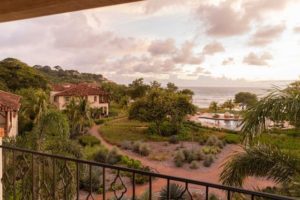
Travel & Leisure just announced its 2022 awards for “Best Resorts in Central America” and “Best Hotels in the World.” Not surprisingly, Rancho Santana is on both lists: #4 in Central America and #56 in the world!
Those are damn good numbers… especially when you consider the world-class resorts and hotels that we beat. A few examples:
* Four Seasons Resort Costa Rica
* Four Seasons Hotel Kyoto, Japan
* Mandarin Oriental, Marrakech, Morocco
* San Ysidro Ranch, Santa Barbara, California
* The Goring, London
* Hotel Savoy, Florence, Italy
* Curtain Bluff, St. John’s, Antigua
* Shangri-La Singapore
* Nobu Hotel Miami Beach
* Le Bristol Paris
For the complete lists, click here and here.
And for more information about Rancho Santana, click here.
The Stanley Hotel, Estes Park, Colorado
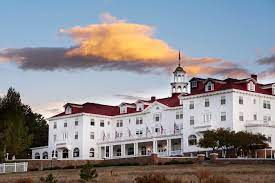
On my list for a future Ford/Fitzgerald family reunion…
Opened in 1909, and a short trip from Denver, the landmark Colonial Revival building was the inspiration for the Overlook Hotel in Stephen King’s The Shining. Set against the backdrop of the Rocky Mountains and Lake Estes, it offers four types of accommodations:
* The Stanley, featuring the original historic hotel rooms
* The Lodge, with updated historic rooms and a boutique feel
* Aspire – modern apartment-style rooms with kitchenettes
* Residences – fully equipped 1- to 3-bedroom condominiums
Click here to check it out.
Athens, Greece
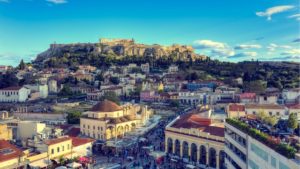
In Athens, we’ve been staying at the King George Hotel, which is next door to the Grande Bretagne, and just a bit more affordable. But because both are part of the same luxury hotel franchise, we get to use the Bretagne’s restaurants, rooftop bar, and private cigar lounge.
We’re on the Placa, the central plaza in the heart of the city’s upscale shopping streets and nearby food markets and boutiques and galleries. I rarely buy anything when I’m traveling, but I like shopping. It’s a window into the similarities and differences of US and foreign cultures. So we’ve done a fair amount of that, along with visiting the de rigueur Parthenon, Acropolis, and other ancient ruins.
We also visited the National Museum, which I very much liked for the same reason: the view it affords of the similarities and differences between US, European, and Greek art during the 20th century.
Athens has hundreds of really great cafes, restaurants, and bars – traditional, continental, and au courant. Several nice (but not spectacular) parks and an amazing range of architecture. Plus super-friendly, hospitable, and helpful people. In many ways, it reminds me most of Rome, which is where we’ll be next.
The Cyclades Islands

As I said at the beginning of this issue, we’ve been enjoying a trip through this group of Greek islands in the Aegean Sea for the past week. And there’s so much about them that’s spectacular. Unlike anything anywhere else in the world. The beaches and little fishing villages. The dramatic volcanic landscapes and natural hot springs. Archeological ruins and ancient history everywhere you look. (The islands were home to one of the oldest civilizations in Europe, from 5000 to 2000 BC.)
Each island has ports, and they are nice. But the real action is in the town centers, which are almost always built on hilltops. All the buildings are white. And cube-shaped. Doors and windows are hues of blue and green, with some exceptions. The overall effect is stunning against the cobalt blue of the Aegean.
The people are friendly and engaging – like Italians, but a bit less thrilled to help you. But just a bit.
A few of the highlights:
* Santorini and Ios – touristy, for good reason. Among the most beautiful towns I’ve ever seen. Almost too much to believe. Lots of great restaurants. Lots of bars and nightclubs. Lots of young people with tattoos.
* Paros – some interesting churches and a fun folk art museum.
* Antiparos – amazing caves. (We learned the difference between stalactites and stalagmites.)
* Delos – a one millennium BC ruin. Very impressive.
Oaxaca, Mexico

I can’t believe it’s been more than 20 years since I was in Oaxaca (wa-HAH-ka) and I’ve never been back. I was so enchanted by it that I nearly bought a small house in the center of the city to use as a pied-à-terre. I didn’t. Oh well.
Number One Son was in high school, blond and blue-eyed. I remember walking down a street like the one above with him. He was talking animatedly about something, completely unaware of the Mexican girls gawking at him. When I caught their eyes, they blushed and laughed.
The city is known for its unique combination of Spanish colonial architecture and Mixtec and Zapotec cultural influences. It was, and I’m sure still is, a treasure trove of artifacts and opportunities, museums and art galleries, and craft stores of every sort. I bought a set of small paintings on tin that were made to beseech the saints for some desired good.
What to see in Oaxaca:
* the Museo de las Culturas, one of Mexico’s best regional museums
* Museo Rufino Tamayo, including collections of pre-Columbian art once owned by the artist
* Monte Albán, one of the country’s most spectacular archeological sites
* the murals in Palacio de Gobierno
* Central de Abastos, a huge flea market on the outskirts of town
* Mercado Benito Juárez – a little touristy, but a great place to grab lunch and pick up some souvenirs
Qianmen Street – Beijing, China
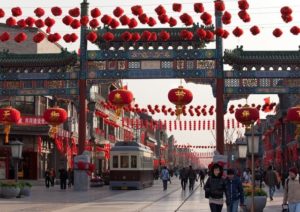
Qianmen is one of the oldest pedestrian streets in the world. I took a nice long walk on it the last time I was in Beijing. It has a lively balance of the old and the new, with plenty of interesting shops to browse, businesses to patronize, historic landmarks, and quaint and fashionable places to eat. The newness is thanks to an upgrade that took place first in the 1960s and then again in preparation for the 2008 Olympics.